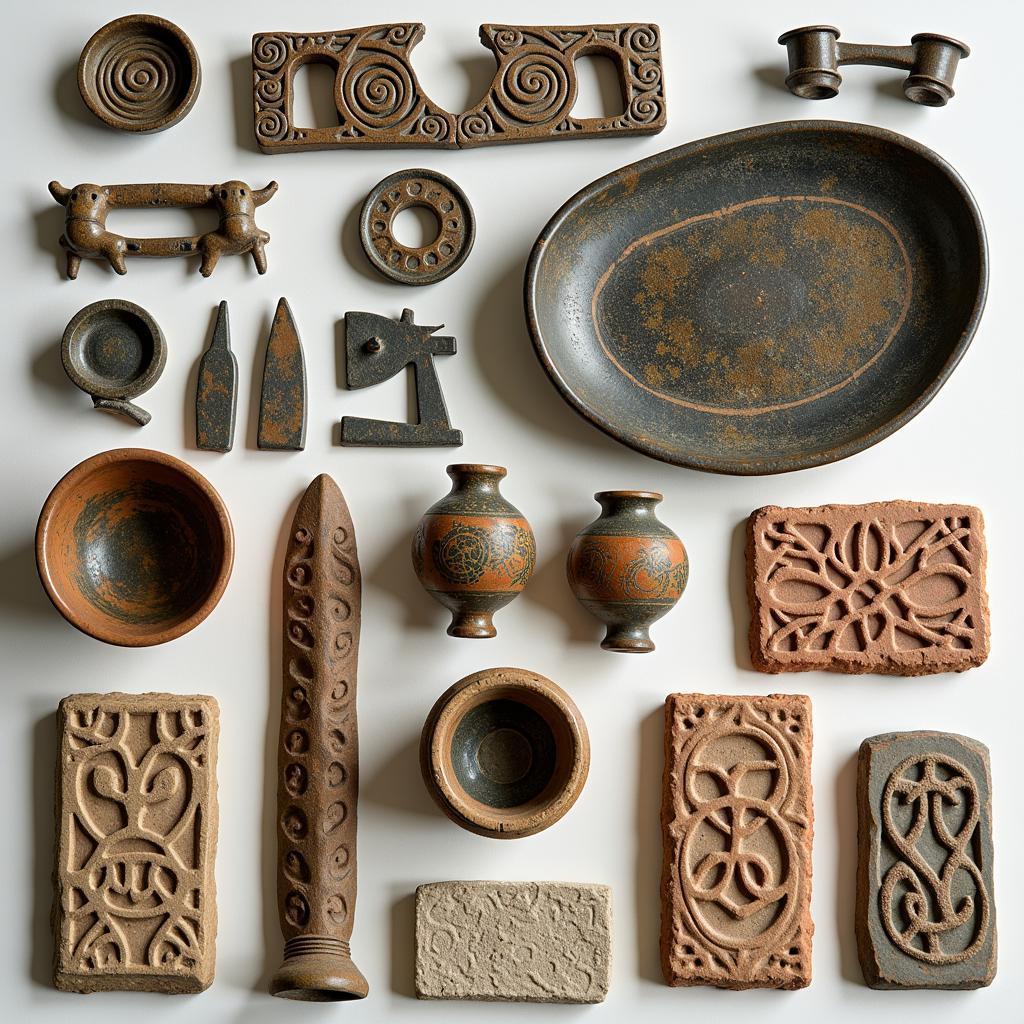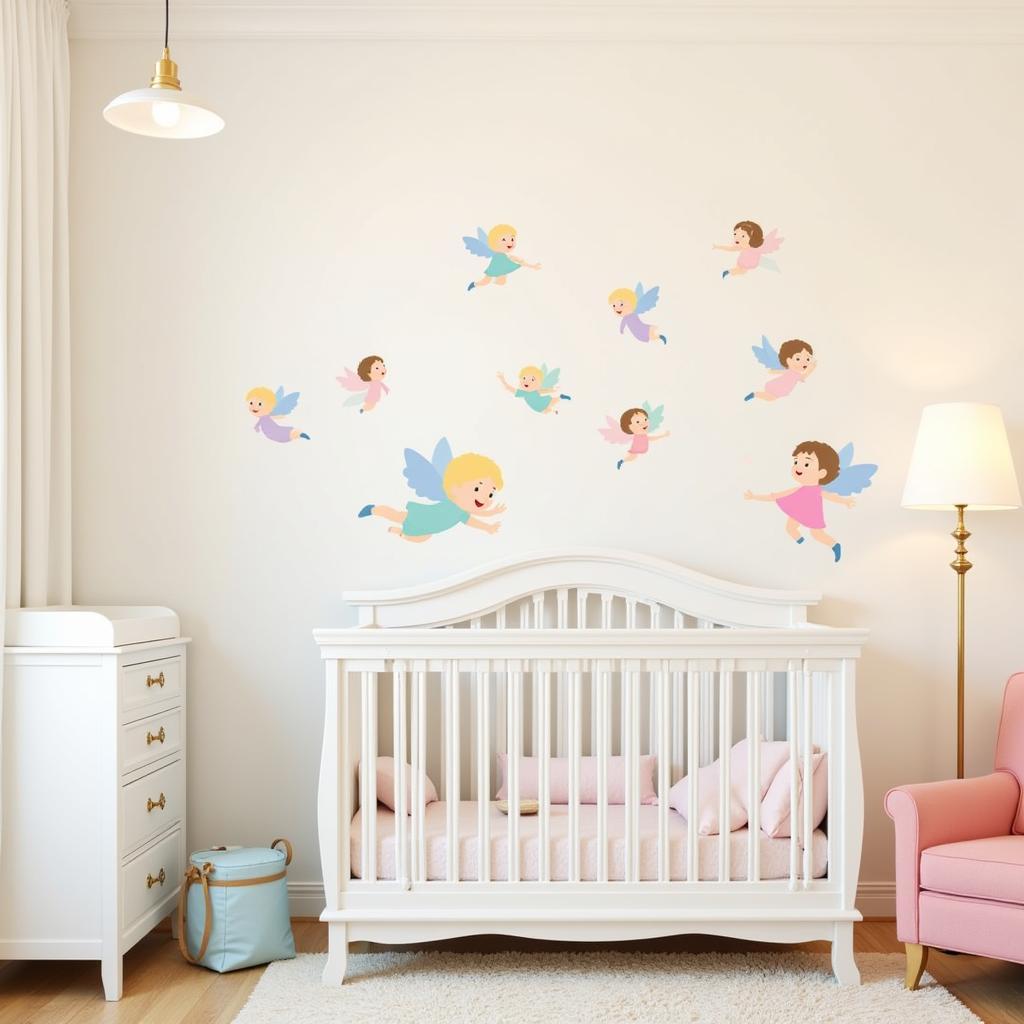Unveiling the Mystique: A Deep Dive into Celtics Art
Celtic art, with its intricate knots, stylized animals, and mesmerizing spirals, has captivated art enthusiasts and historians for centuries. Originating in Iron Age Europe, this unique art form served as more than mere decoration. It reflected the Celts’ spiritual beliefs, societal structure, and profound connection to the natural world. Let’s delve into the captivating realm of Celtics Art, exploring its history, symbolism, and enduring legacy.
The Evolution of Celtics Art: From Iron Age to Christianity
 Early Examples of Celtic Art
Early Examples of Celtic Art
The earliest examples of Celtic art date back to the late Bronze Age, around the 5th century BC. During this period, known as the Hallstatt culture, Celtic artisans excelled in metalworking, crafting elaborate brooches, weapons, and ceremonial objects. The influence of neighboring cultures, such as the Greeks and Etruscans, is evident in the use of geometric patterns and stylized animal motifs.
The subsequent La Tène period, beginning in the 5th century BC, witnessed a flourishing of Celtic art. Named after an archaeological site in Switzerland, this era saw the emergence of the iconic Celtic style characterized by flowing curves, abstract designs, and the incorporation of human and animal forms into intricate patterns. This period saw a shift from geometric designs to more curvilinear forms, reflecting a growing emphasis on dynamism and movement.
The Roman conquest of much of Celtic territory in the 1st century BC significantly impacted the evolution of Celtic art. While some traditional elements persisted, Roman artistic conventions, such as the use of naturalistic figures and architectural motifs, began to influence Celtic artistic expression. This fusion of styles resulted in a unique hybrid art form known as Gallo-Roman art.
The arrival of Christianity in Celtic lands during the Early Middle Ages brought further transformations. Celtic artists began incorporating Christian themes and imagery into their work, adapting traditional motifs and techniques to express their newfound faith. The Book of Kells, an illuminated manuscript created in Ireland around the 9th century, exemplifies this fusion of Celtic artistic heritage and Christian iconography.
Decoding the Symbolism in Celtics Art
One of the most enduring aspects of Celtic art is its intricate and often enigmatic symbolism. Unlike written languages, these visual symbols served as a powerful means of communication, conveying complex ideas and beliefs.
Celtic Knots: These intricate, interwoven patterns are perhaps the most recognizable element of Celtic art. With no beginning or end, they represent the eternal cycle of life, death, and rebirth. Different knot designs hold specific meanings, such as the triquetra symbolizing the triple goddess or the Dara knot representing strength and resilience.
Spirals: Frequently found in Celtic art, spirals symbolize growth, expansion, and spiritual journey. They are often associated with the natural world, evoking images of swirling water, unfurling ferns, and the celestial movements of the sun and moon.
Animals: Animals played a central role in Celtic mythology and belief systems, and their representations feature prominently in Celtic art. Horses symbolized power and nobility, while stags represented the natural world’s strength and wildness. Birds, often depicted in flight, signified freedom and the connection between the earthly and spiritual realms.
The Enduring Legacy of Celtics Art
Despite the decline of Celtic culture as a distinct entity following the Roman conquests, Celtic art’s influence has endured through the centuries. During the 19th-century Celtic Revival movement, there was a resurgence of interest in Celtic art and culture. Artists, writers, and musicians drew inspiration from Celtic motifs and themes, leading to a renewed appreciation for this ancient art form.
Today, Celtic art continues to inspire and intrigue. Its motifs can be found in various contemporary art forms, including jewelry, tattoos, graphic design, and fashion. Celtic art’s enduring appeal lies in its timeless beauty, intricate symbolism, and ability to connect us to the rich history and cultural heritage of the Celtic people.
FAQs about Celtics Art
1. What is the significance of the triskelion symbol in Celtic art?
The triskelion, a three-armed spiral design, is a potent symbol representing various tripartite concepts, such as life, death, and rebirth; past, present, and future; and the three realms of earth, sea, and sky.
2. What materials did Celtic artists use?
Celtic artists utilized a range of materials, including stone, wood, metal (bronze, gold, and silver), and even textiles. Metalwork, particularly intricate jewelry and weaponry, was a particular area of expertise.
3. How did the Romans influence Celtic art?
While the Romans suppressed some aspects of Celtic culture, their artistic conventions influenced Celtic art. This fusion of styles is evident in Gallo-Roman art, which incorporated Roman realism and architectural elements into traditional Celtic designs.
4. Is Celtic art still practiced today?
While traditional Celtic art declined following the Roman conquests, its influence persists. Contemporary artists and craftspeople continue to draw inspiration from Celtic motifs and techniques, adapting them to modern sensibilities and applications.
Explore Further
- Discover more about the Book of Kells, a masterpiece of Celtic illumination, and its intricate designs.
- Learn about the Celtic Revival movement and its impact on the resurgence of interest in Celtic art and culture.
- Explore contemporary artists and craftspeople who continue to draw inspiration from Celtic art.
For any questions or further assistance, please contact us at:
Phone Number: 02462573573
Email: danteum@gmail.com
Address: Savico Megamall, 7-9 Đ. Nguyễn Văn Linh, Gia Thụy, Long Biên, Hà Nội 10000, Việt Nam.
Our dedicated customer support team is available 24/7 to assist you.


